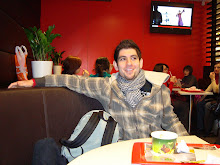
Whether you’re dieting or just trying to maintain a healthy lifestyle, late-night hunger affects us all. By ‘late-night’ I’m referring to the last 1-3 hours before going to sleep. You’ve heard it a million times before, “don’t eat right before bed.” And for the most part, I believe this is good advice. Yet, I do believe that you should listen to your body and if you’re really hungry, you should eat something before sleeping.
The real question is: “what should I eat before bed?” rather than “should I eat before bed?” Listen to your stomach, being hungry when sleeping will keep you from having a good night sleep and that’s not good for your health.
So what should you eat during those last few hours before hitting the hay? Here are some good choices and bad choices and overall dos and don’ts:
Good Snacking Options:
1. Protein shake: This is a good option because shakes are low in calories, sugar and carbs. The high amount of protein will help keep you fuller, longer.
2. Nuts: This is a good option because nuts are packed full of protein and healthy fats. They lack carbs and sugar so your body doesn’t need much time to ‘burn off’ the calories. Nuts like almonds will keep you satisfied for a long time and will help you overcome cravings. Just grab a palm-full of nuts and kill those cravings.
3. Piece of cheese: Cheese is full of protein and calcium. Plus, cheese is very filling and doesn’t contain carbs or sugar. Cottage cheese and plain yogurt are good choices. Avoid sugary yogurts and just keep ‘cheese eating’ in moderation and you’ll be fine and full.
4. Vegetables: Green vegetables are a good choice because of their high-fibre content. Fibre keeps you full for a long time and is good for you. You can’t get fat by eating vegetables. So eat a salad, spinach or some broccoli and you’ll ensure healthy late-night snacking.
5. Egg white omelette: Egg whites are full of protein and are low in calories. Ounce for ounce egg whites are the most satisfying and healthy snacking option. Don’t eat the yolks because they contain high levels of fat and cholesterol, which you don’t need before bed. A large egg has 70 calories; 53 are found in the yolk and only 17 are in the white. Egg whites are tasty and healthy – the perfect option.
Bad Snacking Options:
1. Baked goods: Muffins, croissants, danishes and/or donuts are the worst late-night snacks. They are full of fat, sugar and carbs. The carbs and sugar won’t be burned off fast enough before bed and thus, you’ll be sleeping with a stomach full of sugar and carbs. And when you don’t burn these carbs or sugars off, you gain weight. It’s simple and it’s bad. So avoid any baked treat.
2. Bread or toast: Again, just like baked goods, bread is full of carbs. It doesn’t contain much fibre or protein (even if it’s whole wheat) so your hunger probably won’t go away. In fact, bread will just rev-up your appetite and you’ll need to eat a lot in order to fill the void.
3. Pasta or cereal: Same principle as bread or baked goods; all carbs, no health benefits. Unless you’re carbo-loading before a marathon in the morning, avoid all these options because you won’t properly burn off the calories consumed during your late-night feeding.
4. Chocolate milk: Even though milk can be a good late-night snacking option, chocolate milk contains too much sugar for it to be a good choice. When sugar isn’t burned off, it sits in your stomach and turns into fat. So avoid chocolate milk at all costs.
5. Fruit: This is a controversial topic. Many people believe fruit is a good choice, any time of the day. But fruit contains a lot of sugar and even though it’s natural sugar, you still won’t be able to burn it off before sleeping. It will then turn to fat as you sleep. The fibre in fruit is good, but the high amount of sugar makes this a poor snacking option.
There you have it – some good and bad late-night snacking options. Just remember to eat foods with protein and fibre and lack sugar or carbs and you’ll be fine.
Healthy snacking!















